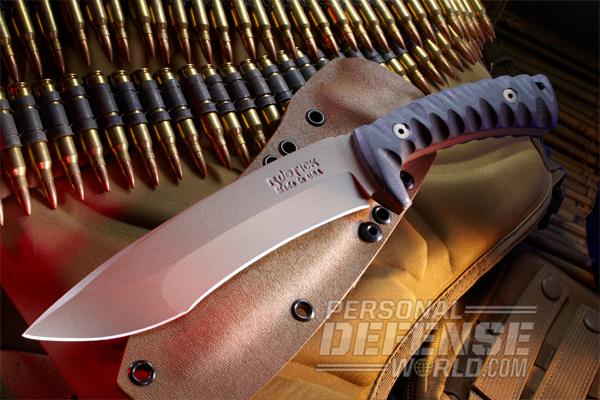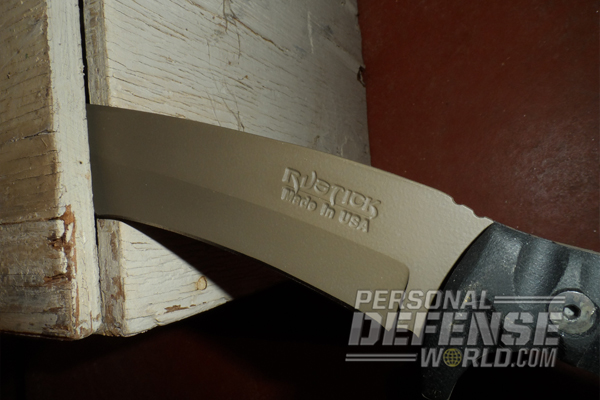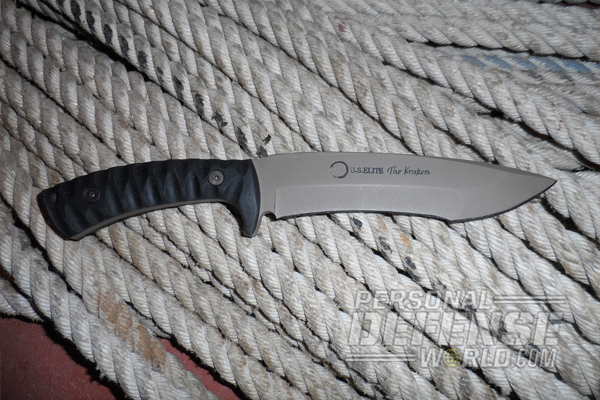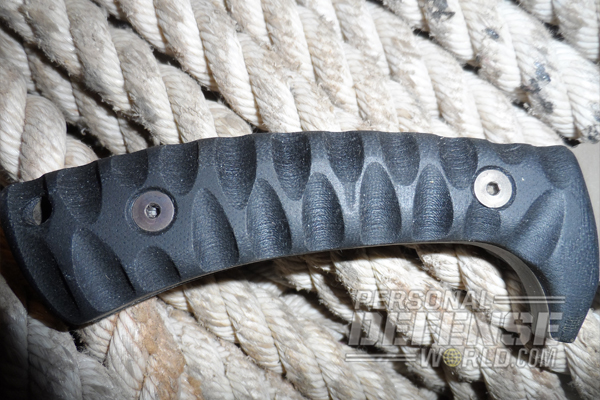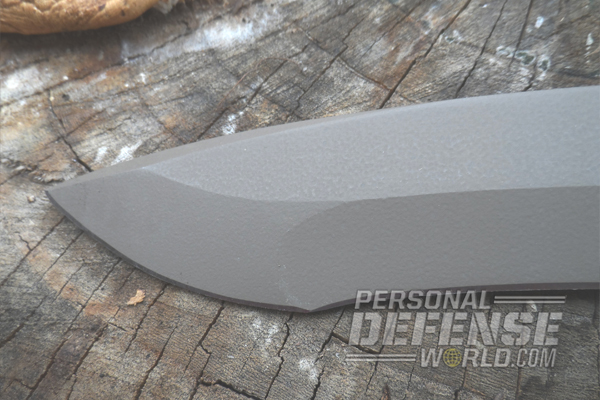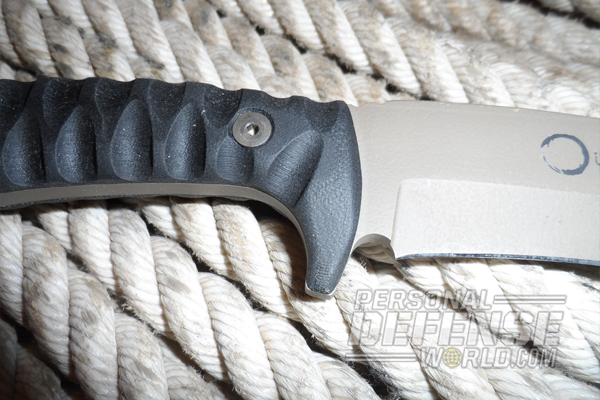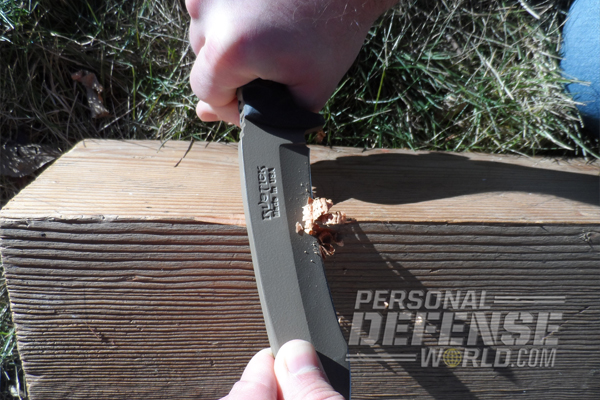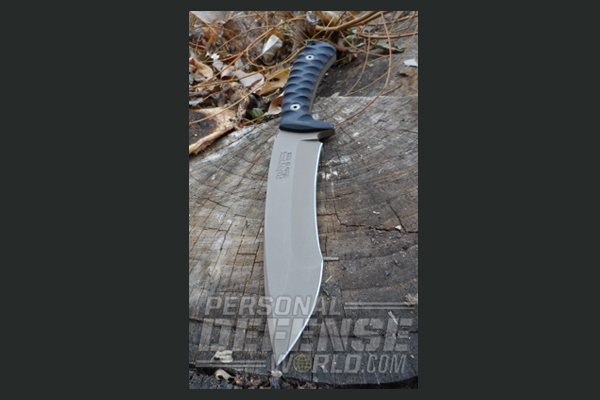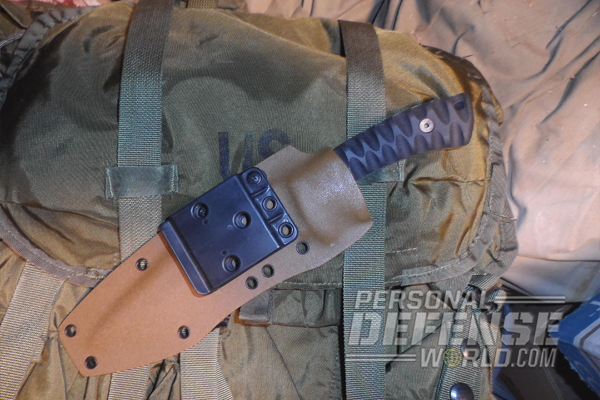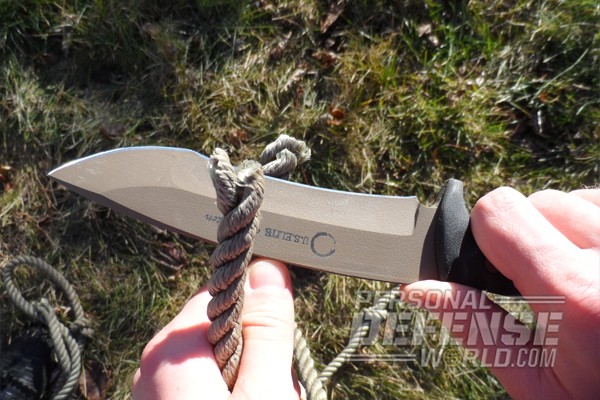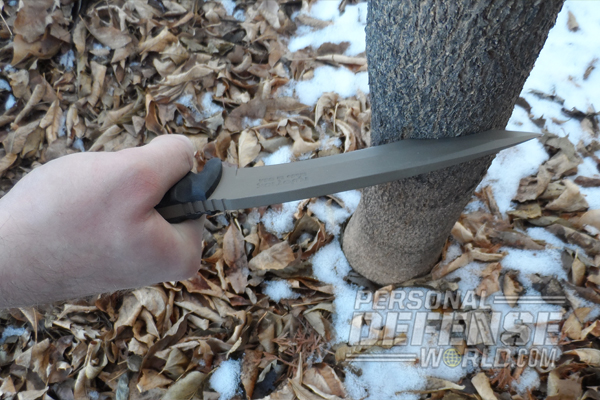When it comes to getting a tool just right, experienced user input is good. User input combined with skillful user design can be very good. Combining user input, user design and user production allows the potential for an item, such as a hard-use knife, to be as good as it can get. Such may be the case with the line of purpose-built tactical blades designed and built by talented blade smith Jack Stottlemire of Rustick Knives. Stottlemire logged some 27 years as a leatherneck, GI, paratrooper and in spec ops, retiring as a sergeant major after a dozen combat tours. The Rustick blades he makes are good to go to war—and they do every day. Located in Fayetteville, North Carolina, Stottlemire has a loyal following among troops at nearby Fort Bragg who know the requirements of a military knife, and who know that they can get such a no-excuses blade from Rustick. In the instance of Rustick’s new Kraken blade, Stottlemire teamed with former Army Ranger and spec-ops operator Jim Erwin of U.S. Elite. The synergism between these two experienced spec-ops veterans has resulted in a no-bull design. It is produced from materials selected as the best for each function, and flawlessly built by Stottlemire at Rustick Knives in Fayetteville.
“Designed and built in the USA by former spec-ops operators who know what a combat/field knife needs to be.”
“Designed and built in the USA by former spec-ops operators who know what a combat/field knife needs to be.”
KNIFE DETAILS:
What you first notice about the Rustick Kraken is what is not there: There are no bells, whistles, mindless aesthetic sculpturing nor extraneous features. This is a serious tool designed and built for the war-fighter. It suffers no “catalog photo” clutter that would detract from its raison d’etre. This clean engineering allows the Kraken the elegance of functional design, and the precisely detailed workmanship and finish treatment give it a robust and attractive utilitarian demeanor.
Advertisement — Continue Reading Below
I’m a fan of multi-tools, but multiple accessories are not appropriate on a combat blade. I personally don’t even prefer serrations except on a bread knife or something mission-specific for cutting textiles. In trained hands, a straightforward and well-designed blade is capable of many functions. Anybody who can’t get a variety of good work out of an uncluttered, well-designed blade shouldn’t be trusted with something sharp. The Kraken is a confident and tidy piece of engineering by men who understand what is needed, and it’s built for folks who know what to do with it. The Kraken’s deeply sculpted handle scales of black G10 give an absolute grip even when contaminated by oil, mud or blood. The sculpted, angular texture pattern is gently subdued to allow extended use without working hotspots. The scales are attached with four flathead hex-head screws tapped into the full tang. The great strength of G10, a glass-filled epoxy composite, allows the scales themselves to be formed at the front over a rugged lower quillion. This, plus jimping at the top rear of the blade, ensures your hand stays where it needs to be during strenuous thrusting, but it does not hamper the facile properties of the knife. There is additional jimping atop the rear of the curved handle tang, and slightly below is a lanyard hole. At the rear of the blade is a small notch that wastes no blade length on a choil.
The slender silhouette of the handle (0.875 inches at its shallowest part) looks slender in relation to the blade, which has considerable depth (1.375 inches in the forward portion), but that is not the case. Your eye may say “skinny,” but your hand will probably think these are just the right dimensions for grip and control, especially with gloves. Not all serious blades fall readily to the hand whether or not you are wearing gloves—the Kraken is one that does. Ergonomic considerations can be trumped by individual orthopedics, but so diplomatic were the design compromises in the Kraken grip design that the only issue during our informal “Hey, Bud, grab this” tests was that some individuals didn’t want to hand it back. The handle shape gives the feel that there is no wrong way to hold it, and this is a significant consideration because different tasks require different gripping techniques.
Advertisement — Continue Reading Below
The business end of the Kraken reflects a unique but mature design. It’s one of those unusual configurations that leaves you wondering, why hasn’t everybody done something like this? Fair question. The Kraken’s differential edge geometry is a feature not common on production knives simply because it takes quite a bit more effort—and skill—to do it like this. The rear, recurved portion of the 6.375-inch by 0.25-inch blade is precisely hollow ground. This makes it easier to sharpen the part of the blade that will do the most cutting. The knife is 11.3 inches overall. Forward of that, the blade shows a bit more belly and goes to a fairly obtuse “appleseed” style of grind on the first 11 models produced, or to a flat grind on the subsequent 25 production models. These grinds leave more meat on the blade than those that are hollow ground. This helps retain tip strength in the portion of the blade that will be subject to penetration stress or, in the real world of combat blades, abuses such as prying. A hollow grind in that tip area would also be more likely to roll over or chip if the blade is pressed into service as a chopper. There is a gentle swedge to the leading 2 inches at the top of the blade, just enough to aid in penetration. The overall grip and blade silhouette are subtly curved. The recurved blade and its point geometry bring to mind a “kukri meets tanto” aesthetic.
Stottlemire makes custom knives by stock removal methods, and the Kraken starts life as a billet of 0.27-inch 80CRV2 tool steel from New Jersey Steel Baron, who takes good care of custom and small knife makers. Not all “tool” steels are created equal, but a hallmark of the good ones for knives is that they are formulated to stand up to cutting work and repeated sharpening—80CRV2 is widely used for circular saws, measuring tools, woodworking tools, knives, drills, reamers and axes. A high-carbon steel, it heat-treats well and predictably. Stottlemire hardens this blade to RC 58-59, probably the best compromise for a blade that features variable grind geometry. If I ever run out of yard-sale mill files and broken leaf springs, I’d like to try my amateur hand at making an 80CRV2 blade.
IN THE FIELD:
Any test or task we threw at the Kraken seemed to indicate that it has benefited from the same level of care in the hardening and tempering part of its manufacture as it has from the skillful way the steel is formed, finished and coated. It held an edge both in the hollow-ground and obtusely-ground parts of the blade, and it quickly touched up with a flat diamond hone. The Kraken comes with Flat Dark Earth tan Cerakoting, which contrasts pleasantly with the black G10 scales to give an attractive and businesslike glare-resistant finish. It is supplied with a Coyote Brown Kydex sheath that has a Blade-Tech Klip, so you can carry it just where you need it on your duty gear or go pack.
Advertisement — Continue Reading Below
Although the perceived “balance” of a particular blade may depend on the mission or task at hand—as in thrusting, slicing, sawing or chopping—to us, the Kraken offered excellent balance, albeit slightly point heavy. Weighing in at 15 ounces, thanks to its robust 0.25-inch blade (19.5 ounces with sheath), this knife was very steady and responsive in the hand, no doubt in part because of the secure grip it offers and the comfortable, curved angle of the handle. The meaty stock from which it is made works with the design configuration to give a solid (yet very live) feel in motion. For those of us whose days in uniform are long past, this is also an appropriate blade for any bush scenario where absolute reliability is paramount. In summation, the Stottlemire-Erwin design partnership has done everything right and many things uniquely, and the knife is skillfully produced from excellent materials for the intended mission. The Kraken is good to go to war. Or anywhere.
For more information on the Kraken Knife, visit: http://www.us-elitegear.com/
Advertisement — Continue Reading Below
